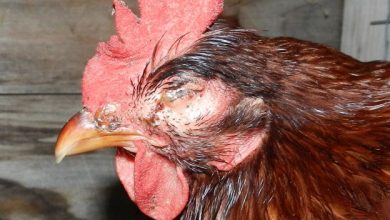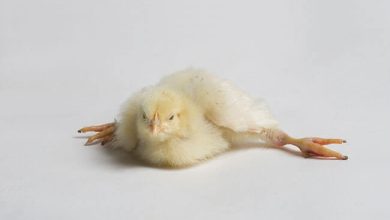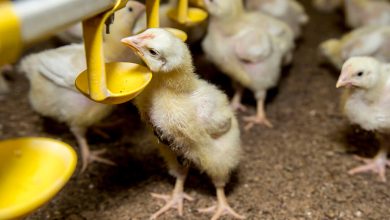HEAT STRESS MANAGEMENT IN POULTRY
HEAT STRESS MANAGEMENT IN POULTRY
D. K. Chaurasia1, A . Yadav1, S. S. Biswal1, S. Sathapathy2 and S. K. Joshi3
1Department of VGO, CVSc. & A.H., OUAT, Bhubaneswar – 751003, Odisha, India
2Department of Anatomy & Histology, CVSc. & A .H., OUAT, Bhubaneswar – 751003, Odisha, India
3Scientist (Animal Science). KVK. Jharsuguda, OUAT, Bhubaneswar – 751003, Odisha, India
Introduction: Heat stress is a worldwide problem in poultry production, especially in broiler and layer lines. Heat stress begins when the ambient temperature climbs above 80oF and is readily apparent above 85oF. When a bird begins to pant, physiological changes have already started within its body to dissipate excess heat. Even before the bird reaches this point, anything that you do to help birds remain comfortable will help maintain optimum growth rates, hatchability, egg size, egg shell quality, and egg production. High ambient temperatures can be devastating to commercial broilers; coupled with high humidity they can have an even more harmful effect. Heat stress interferes with the broilers comfort and suppresses productive efficiency, growth rate, feed conversion and live weight gain. In poultry production, heat stress can be described as acute or chronic. In broilers, growth rates, feed efficiency and carcass quality are negatively affected. Again, prolonged periods of elevated ambient temperature increase the broilers time to reach market weight and increase mortality.
In laying hens, heat stress leads to a decline in egg production and egg quality, as well as, shelf life of eggs is shortened. In breeders, high ambient temperature coupled with high humidity decreases fertility resulting in low hatchability. During the heat stress period the increase in body temperature has a negative effect on gamete formation and the fertilization process. During periods of heat stress the hens have to make major thermo-regulatory adaptations to prevent death from heat exhaustion. As a result, the full genetic potential of the layer is often not achieved.
Clinical signs and symptoms of heat stress: Poultry subject to high environmental temperatures exhibit many behavioural and physiological changes which allow them to re-establish heat balance with their surroundings. As ambient temperature increases above comfort zone, chicken spend less time in feeding, more time in drinking and panting, as well as more time with their wings elevated, less time moving or walking and more time in resting (Mack, et al., 2013). Usually, their wings are spread away from the body to promote cooling by reducing body insulation and they splash water on their combs and wattles in order to increase evaporative cooling from these surfaces. Heat stressed birds also spend relatively less time engaging in social behaviour and in changing posture. In a natural environment, birds will look for a shady and cool area. Within the bird, blood flow is diverted from certain internal body organs such as the liver, kidneys and intestines to dilated blood vessels of the peripheral tissue (skin) in order to facilitate heat loss.
MEASURES TO ALLEVIATE HEAT STRESS IN POULTRY
Housing design: The design of the building and its ventilation system, the sitting of new buildings and construction materials, will all have an effect. Roof colour, reflectivity, pitch and orientation, and whether the building is in the shade or not, is also factors which will have a small bearing on solar heat gain. Expert advice should be sought at the design stage. The house and ventilation system must complement each other to achieve maximum benefit. Traditionally poultry producers have found that natural ventilation tends to be most effective in houses which are 12 m in width or less, although the houses can be of any convenient length. Recommended design spacing D = 0.4 x H x (L) 0.5 where, H and L are height and length of obstructing building or not less than 10-12 meters. All naturally ventilated houses must be equipped with some type of adjustable side-wall curtains to control the flow of air into the house. Properly designed roof overhang helps to reduce the possibility of both direct and indirect sunlight entering a house during hot weather. To minimize heat-stress-related problems during hot weather, it is always beneficial to insulate poultry-house roofs/ceilings. A typical minimum level of ceiling insulation for a naturally ventilated house is R-value 1.25 m2 CAN. Whereas houses that have high temperatures above 40°C or temperatures below 0°C typically require ceiling R-values of 2.25 m2 CAN or more. There are a variety of methods of insulating a poultry-house ceiling dropped ceiling, rigid board insulation, spray polyurethane insulation, reflective insulation etc. Similarly, reflective roof paints have been shown to reduce roof temperature from 5°C to 32°C, thus dramatically reducing heat gain through roof surfaces.
Air movement: Increasing the amount of air movement over a bird is one of the most effective methods that producers can use to increase heat removal from birds. Air movement provides a number of benefits that help to cool the birds during hot weather. First, it increases convective heat loss from the birds in a house, thereby lowering the effective air temperature. Second, it helps to remove trapped heat from between the birds as well as from cages. Last, but not least, it lessens the adverse effects of high-humidity environments. High air speed is essential in heat stress relief. In systems with lower stocking rates, the effects are greater. As air speed increases, the amount of heat removal increases and the bird cooling is enhanced. The effect of this is to transfer the bird heat loss from latent heat loss (heat loss through panting) to sensible heat loss (convective heat loss), so as wind speed increases more sensible heat loss occurs than latent heat loss.
Recommended air speed: All poultry producers should aim for between 1 m/s and 3 m/s for relief against extreme heat. 1 m/s should be an absolute minimum for commercially stocked houses. 1.0 -1.5 m/s should be within the abilities of most conventional powered ventilation systems, especially after minor upgrades. (1 m/s = 200 ft/min). To achieve 1.5 — 3 m/s, the house would usually need to be operating in a tunnel ventilation format. Low stocking rate systems, such as breeders, pullets and layers should aim for at least 0.7 m/s. In these systems, high volumes of air can, to some extent, make up for an inlet system that cannot deliver high air speeds over birds. But good air speed and good air change rate is the ideal.
Ventilation: During the summer when the temperature and humidity are high, proper poultry house ventilation is vital to ensure the necessary removal of heat and the continued productivity of the flock. Poultry house ventilation systems have a number of components. These include curtains, fans, fogging nozzles, evaporative cooling pads, timers, static pressure controllers, thermostats etc. Most ventilation systems can provide an adequate indoor environment when properly managed.
Tunnel ventilation: A new arrangement for ventilating poultry houses in the summer is tunnel ventilation. This method involves moving air along the building axis from inlets to exhaust fans, providing high airflow velocities. This rapid air movement increases convective heat loss, reducing the effective temperature experienced by the birds. Most of the benefits of tunnel ventilation occur at an air velocity of 350 feet per minute. This velocity should be considered the minimum for most house designs. Tunnel ventilation systems do not operate on a static pressure difference. In fact, they work best when there is no pressure difference between the inlets and the fans.
Evaporative cooling: An evaporative cooling system is an essential component of any hot-weather ventilation system. As house temperatures rise, the temperature difference between a bird’s body and the ambient air decreases, this results in a decrease in heat loss from a bird. There are basically two types of evaporative cooling systems used in poultry houses: fogging systems and pad systems. While pad systems can only be installed in a power-ventilated house, fogging systems can be used in either power ventilated or naturally ventilated housing to lower house temperatures during hot weather. A third system, sprinkling, has limited usage except in very dry climates.
Foggers: Foggers reduce air temperature in the house on hot days (90 o to 950 F) when humidity is low, especially during mid¬day when humidity levels are lowest and temperature is highest. The foggers inject fine water particles into the warm inside air. As the water vaporizes, heat is absorbed from the air, lowering its effective temperature. When foggers are used, they should be operated intermittently or designed to avoid excessive water flow into the environment. If too much water flows through the foggers, humidity levels may increase to the point where birds can no longer cool themselves by evaporation. Fogging systems in naturally ventilated house are typically designed for a water flow rate of 50 to 100 gallons per hour. Fogging systems have also been used successfully in environmentally controlled poultry houses. Fogging systems that provide a reliable fine mist and that have water filters (to keep nozzles from clogging) and also have a positive shutoff to prevent dripping can provide successful cooling without causing wet litter. The water pressure should be at least 100 pounds per square inch (psi) to achieve a fine mist; a pressure 200 psi is preferred.
Stocking density: Heat loss often depends on the difference between the body temperature of birds and the ambient temperature. If stocking density is high, the radiant heat between the birds accumulates and the temperature increases. Birds in high density stocked barns tend to absorb each other’s radiant heat load, which makes heat management more difficult for the birds. Therefore, the birds cannot lose body temperature. Reducing the bird density in the summer will give more floor space per bird and allow more heat to escape from underneath their bodies and from the litter. Also, less crowded barns allow birds to move more freely to nearby water lines. Where possible, and in particular in older broiler houses with less efficient ventilation equipment, it is sound practice to reduce stocking densities in the summer. It is possible to calculate the maximum stocking density that any particular poultry house can support in hot weather using known facts about the house and its ventilation efficiency.
Drinking water: During heat stress, the bird tries to maintain its body temperature by increased respiration, i.e. evaporation of metabolic water, which may considerably increase the water requirement. Cool water (at 10-120C) should be supplied continuously to birds. Watering space should be doubled. Over head tanks and pipe system should be properly covered to keep the water cool. Providing fresh cool water in noon time is very effective for internal cooling of body (heat sinks) and reducing symptoms of stress. Panting is accompanied by an increase in water loss so more water has to be consumed by birds during hot, dry weather in order to prevent dehydration.
Feeding time: Feeding at the right time of the day is very important to help the birds cope with heat stress. During late afternoon a significant rise in body temperature can be observed, which, in severe cases, can cause bird mortality. This is not the hottest time of the day, but it is the peak time of digestion if the birds have been fed in the early/mid morning. A good strategy to take an unnecessary heat load off the birds is to withdraw feed 8 hours prior to the anticipated time of peak temperature. One third of the daily feed ration should be given in the morning and two thirds in the late afternoon. An additional advantage is the availability of calcium in the digestive system during s hell formation at night and in the early hours of the morning. This will improve shell quality and prevent the birds from depleting bone calcium. Socalled ‘midnight snacks’ are a good tool to give hens extra feeding time in the cooler parts of the night.
Nutrient requirement: In summer, a very direct way to ensure optimum nutrient intake despite decreases in feed consumption is to increase the nutrient density of the ration. Feed should be made denser with nutrients, vitamins and minerals to compensate for reduced intake. Thus, as the hot season progresses it may be necessary to fine tune feed formula again in mid-summer. In addition following features, which have bearing on heat stress control, should be included in summer feed formula.
Conclusion: Both of the climate change and poultry productions have always negative impacts one over the other. Climate change is one of the most important environmental stressors challenging poultry production worldwide. The negative effects of heat stress on broilers and laying hens range from reduced growth and egg production to decreased poultry and egg quality and safety. However, a major concern should be the negative impact of heat stress on poultry welfare. Finally, it is important to mention that intervention strategies to deal with heat stress conditions have been the focus of many published studies, which apply different approaches, including environmental management (such as facilities design, ventilation, sprinkling, shading, etc.), nutritional manipulation (i.e., diet formulation according to the metabolic condition of the birds), as well as inclusion of feed additives in the diet (e.g., antioxidants, vitamins, minerals, probiotics, prebiotics, essential oils, etc.) and water supplementation with electrolytes. Nevertheless, effectiveness of most of the interventions has been variable or inconsistent. More recently, two innovative approaches have been explored, including early-life conditioning (i.e., perinatal heat acclimation) and genetic selection of breeds with increased capacity of coping with heat stress conditions (i.e., increased heat tolerance). However, these potential opportunities, although promising (particularly, for poultry production in hot climatic regions) still require further research and development.




